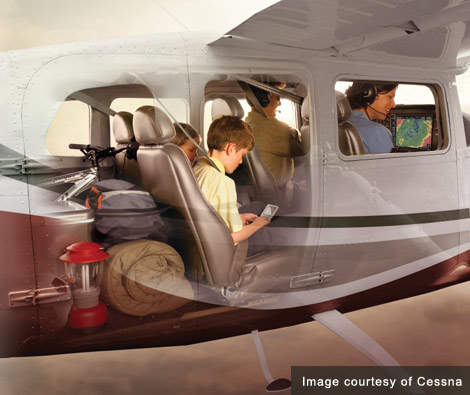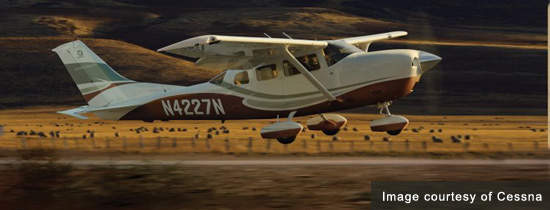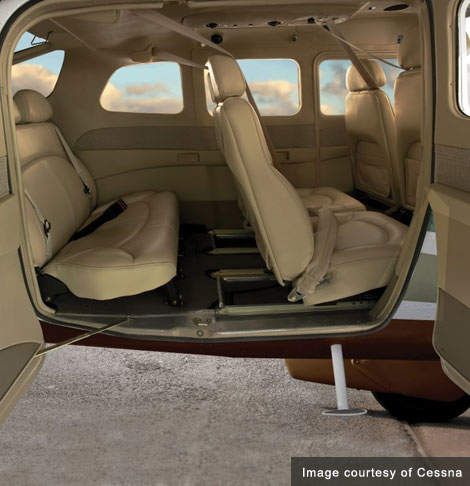The Stationair is a Cessna (a Textron company) single-piston engine aircraft. The roots of the Stationair lie in the Cessna 210 model. In 1963 Cessna released a modified 210 (fixed landing gear and altered doors) as the Cessna 205; the more aerodynamic 206 replaced the 205 after two years.
The manufacture of single-engine aircraft was suspended in 1986; however, with the passing of the General Aviation Revitalisation Act in 1994, Cessna began to manufacture Stationairs again. The new prototype flew for the first time in August 1996. Production models of the 206H and the T206H appeared in 1997 and in 1999 the 2,000th model, a T206H was delivered.
Cessna 206 models are in service with the defence forces of: Argentina, Bolivia, Costa Rica, Djibouti, Guyana, India, Israel, Mexico, Malaysia, Paraguay, Peru, Philippines, Uruguay and Venezuela.
The Stationair is a six-seat, single-pilot aircraft and is most commonly used as a light commercial, ‘bush’, aircraft, personal / light sport use, business use and can be fitted with skis or floats.
The aircraft is certified to the requirements of US FAA Federal Aviation Regulation part 23 through amendment 23-6, including day, night, VFR (visual flight rules) and IFR (instrument flight rules). For longer service life every surface of the Stationair is corrosion proofed.
TURBOPROP ENGINES
The Stationair 206H is powered by a Lycoming IO-540-AC1A5 single-piston engine developing 223.71kW at 2,700rpm driving a McCauley constant-speed three-blade metal propeller; the Turbo T206H’s Lycoming TIO-540-AJ1A engine develops 231.56kW at 2,500rpm driving a McCauley constant-speed three-blade metal propeller with de-ice boots.
FLIGHT DECK
Stationairs are available with the Garmin G1000 glass cockpit, which provides all primary flight, engine and sensor data in real time on two 26.4cm active matrix LCDs.
Cessna announced in November 2006 that Stationairs would be available with the Garmin GFC 700 automatic flight control (AFCS) and flight director (FD) systems, the wide area augmentation system (WAAS), Garmin SafeTaxi and Garmin FliteCharts as standard equipment; ChartView, powered by Jeppesen is optional.
CABIN
The 5.19m³ Stationair cabin has four possible layouts: pilot only, pilot and one passenger, pilot and three passengers, and pilot and five passengers. The cabin is accessed via a 1.04m-high by 0.885m-wide (on average) door. The cargo area is accessed via a 1.00m-high by 1.05m-wide (on average) clamshell doors; an exterior cargo pod is available.








